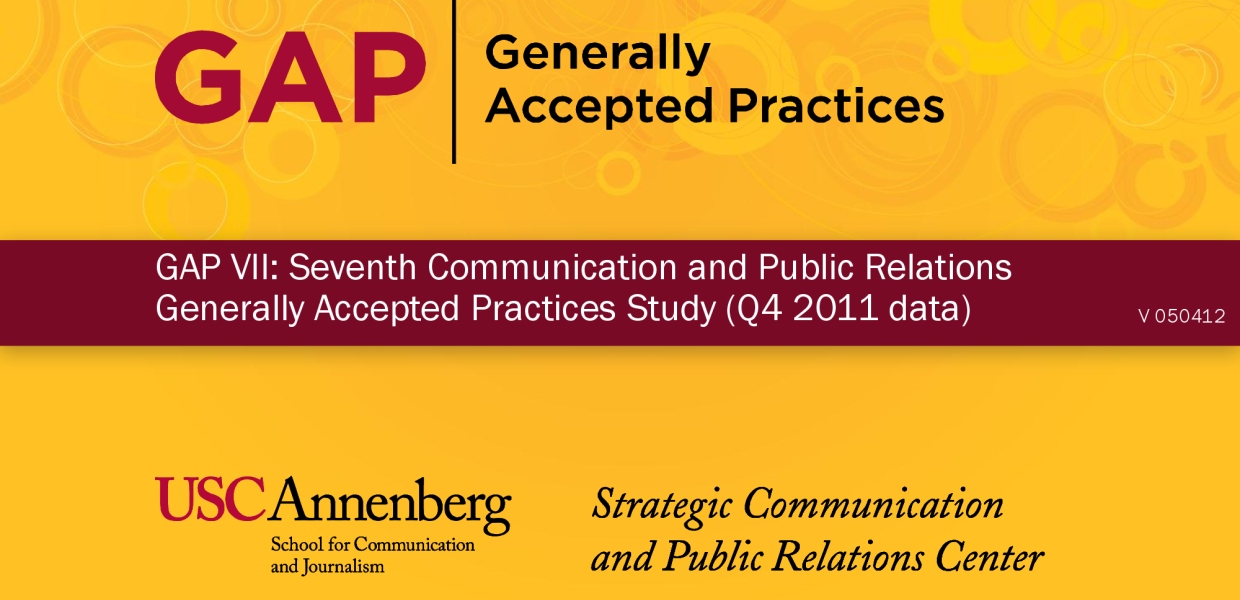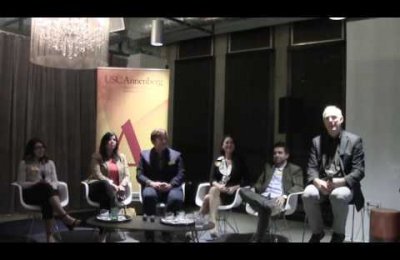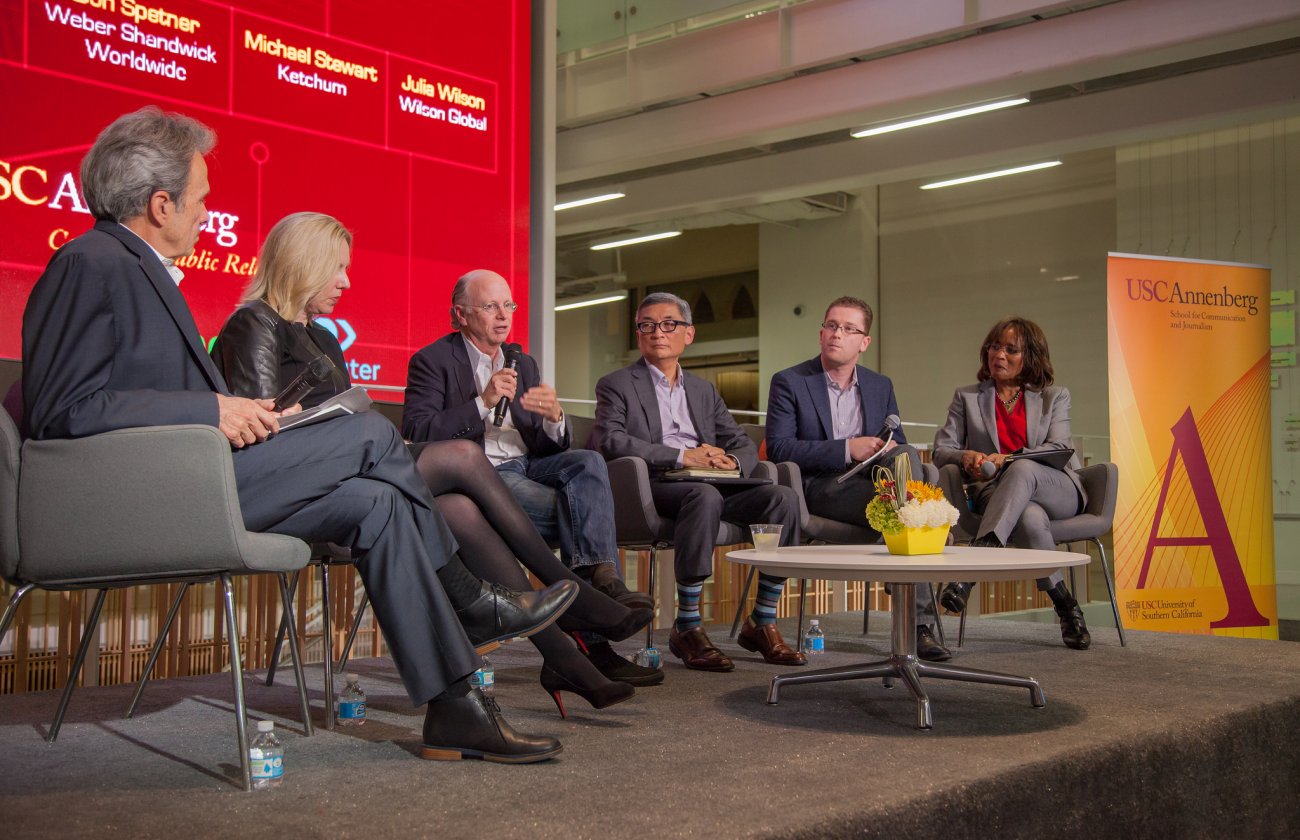The USC Annenberg Strategic Communication and Public Relations Center today published its seventh biennial Communication and Public Relations Generally Accepted Practices (GAP VII) study. This year’s report is the largest and most comprehensive study of the most senior communicators in public and private corporations, government agencies and non-profits in the United States.
The survey provides practitioners with practical information they can use to better manage the communication functions in their organizations; identifies Best Practices against which they can benchmark their own organizations; and pinpoints trends to be aware of as they plan for tomorrow.
The GAP VII study, in which 620 senior communicators participated, was conducted in cooperation with the country’s four leading professional PR associations: Arthur W. Page Society, Institute for Public Relations (IPR), International Association of Business Communicators (IABC) and Public Relations Society of America (PRSA).
Key Findings
- Budgets are mostly up: Public corporations on average reported higher public relations/communications (PR/Comm) budgets than respondents did two years ago. When asked about budget expectations for next year, more than 50% expect no change, while more than 25% actually anticipate budget growth.
- Measurement and evaluation are on the rise: Corporations report an increase from 4% to 9% in the portions of their total budgets allocated to measurement and evaluation of PR/Comm programs. This pronounced rise speaks to widespread adoption of social media monitoring tools and increasing use of primary research in program planning and evaluation.
- How you measure is linked to success: While companies have distinctly different approaches to PR/Comm measurement those measures tend to group into two categories: “Outcomes” and “Outputs.” Companies utilizing “Outcomes” measures such as influence on stakeholder attitudes and opinions, the bottom line, etc. are much more likely to say they have a good external reputation and are successful than are companies that rely on traditional “PR output” measures — such as clips, impressions, and advertising equivalency.
- PR/COM has its seat at the table: In nearly 60% of responding companies PR/COM reports directly to the “C-Suite” (chairman, CEO, COO, etc.), reflecting today’s increasingly transparent, communication-intensive environment.
- Social media has become mainstream: Seventy percent of PR/Comm departments report budgetary responsibility for social media monitoring and 66% for social media participation. This reflects a 17% and 13% growth, respectively, over two years ago. Further reflecting a shift to Web 2.0 communication is a rise in responsibility for search engine optimization (SEO). However, PR/Comm departments appear to be mostly taking on increased social media responsibilities without additional budget.
- Some social media tools are hotter than others: The most widely used social media tools by corporations are social networking sites (i.e. Facebook, which is used by 53% of public companies), micro blogging (i.e. Twitter, also used by 53% of public companies), Search Engine Optimization (52%), and sharing and producing online videos. Meanwhile, the use of wikis and virtual worlds has become nearly extinct.
- The field is expanding to include new functions: In addition to growth in social media the PR/COM field is experiencing growth in the areas of Internal Communication (up from 47% to 58% of respondents having such responsibility over the last two years) and Customer Relations (up from 6% to 15%).
- Marketing/product PR is in a state of decline: While still a “Core” function with 51% of corporate respondents having budgetary responsibility for it (versus 61% in 2009), there has been a substantial decrease in the emphasis on traditional Marketing/Product PR. This could be attributable to an increasing reliance on social media to promote products.
- Agency-of-record relationships are vanishing: Over the last ten years, the use by client organizations of a single outside PR agency of record has consistently decreased. In 2002, more than 50% of public corporations reported an AOR relationship. This number decreased continuously and has now shrunk to just over 15%. At the same time, the number of agencies used by corporations on an ongoing or project basis continues to increase. This is likely the result of a need for specialized and/or regionally focused agency services.
How to Access GAP VII
The GAP VII study report is available for free download at the USC Annenberg Strategic Communication and Public Relation Center’s (SCPRC) web site annenberg.usc.edu/gapstudy. The same location hosts the GAP VII Insight Base, a comprehensive online catalog of detailed findings. This is where PR practitioners can gain insight into specific topics that are of interest to their organization.
GAP VII Industry Alliance Partners
Supporting participation in and publication of GAP VII are The Arthur W. Page Society, the 400+ members of which are generally heads of communication in major U.S. organizations; the Institute for Public Relations (IPR), which serves as research partner contributing its expertise in evaluating the science underlying the practice of communication; the International Association of Business Communicators (IABC), with its 15,000-member global network of communicators; and the 21,000-member Public Relations Society of America (PRSA).
About SCPRC
The Strategic Communication and Public Relations Center (SCPRC ) is part of USC Annenberg’s Public Relations Studies unit. Its mission is to advance the study, practice and value of strategic communication and public relations by conducting innovative applied research in partnership with other visionary organizations.








